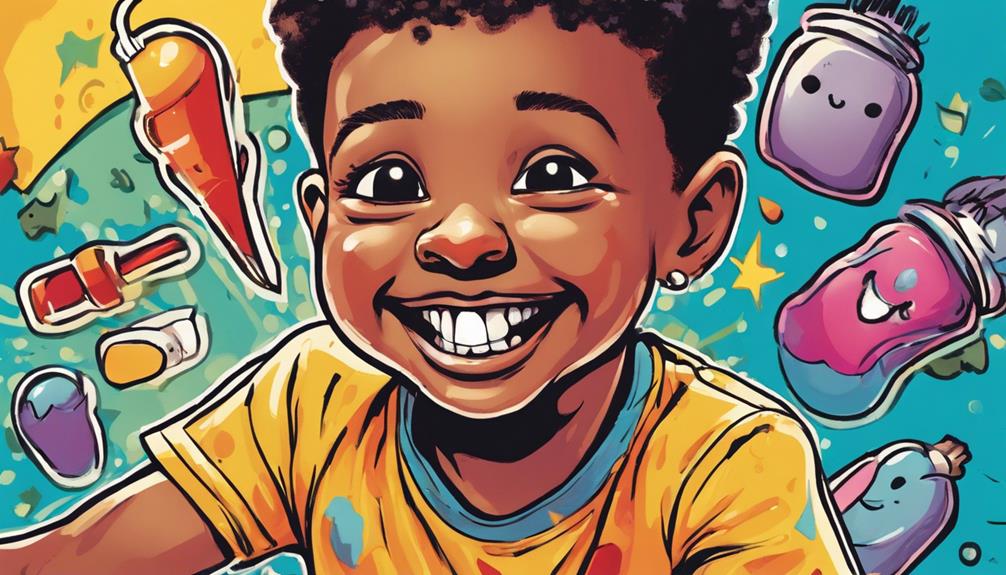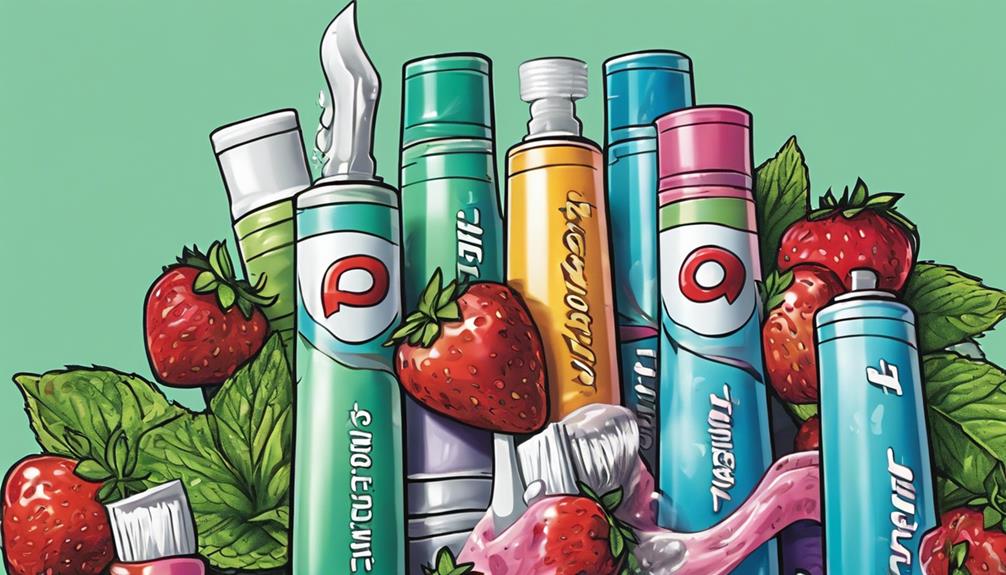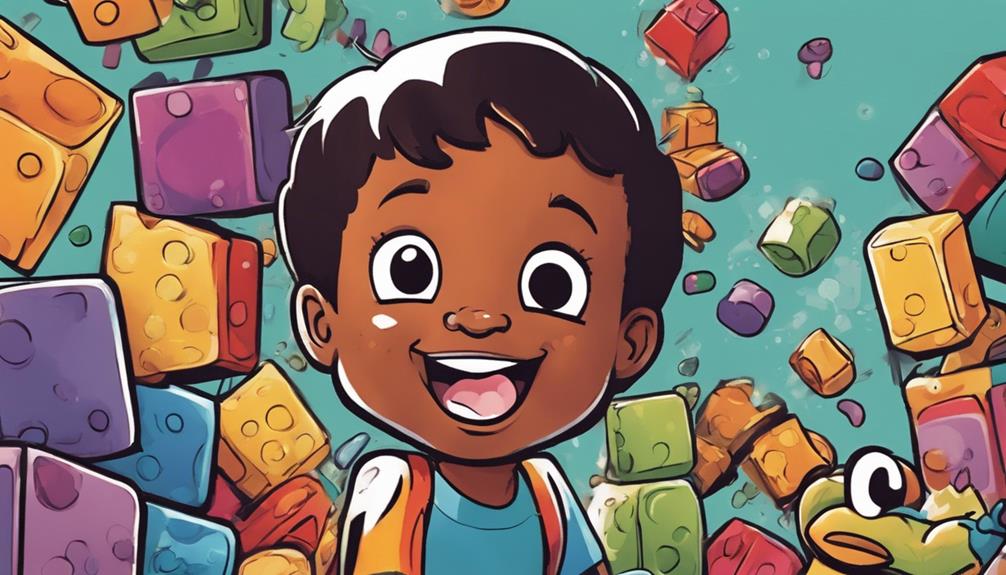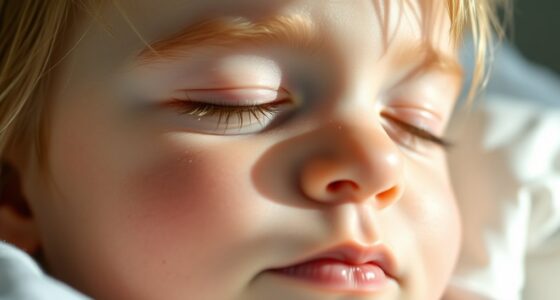Baby teeth usually start falling out around age 6. You'll often notice the lower central incisors are the first to go. Shortly after, the upper central incisors follow. While most kids lose their baby teeth between ages 4 and 7, it can vary from child to child. This loss means that permanent teeth are on the way. Factors like tooth decay or injury can lead to early loss, which might cause misalignment. Keep up good oral hygiene as your child undergoes this shift. If you're curious about the entire process, there's much more to discover about managing these changes!
Key Takeaways
- Baby teeth typically begin to fall out around age 6, with variations between ages 4 to 7.
- The first teeth to be lost are usually the lower central incisors.
- Upper central incisors generally follow the lower ones, falling out between ages 6-8.
- Lateral incisors are lost between ages 7-9, while canines and first molars are lost between ages 9-11.
Age of First Tooth Loss
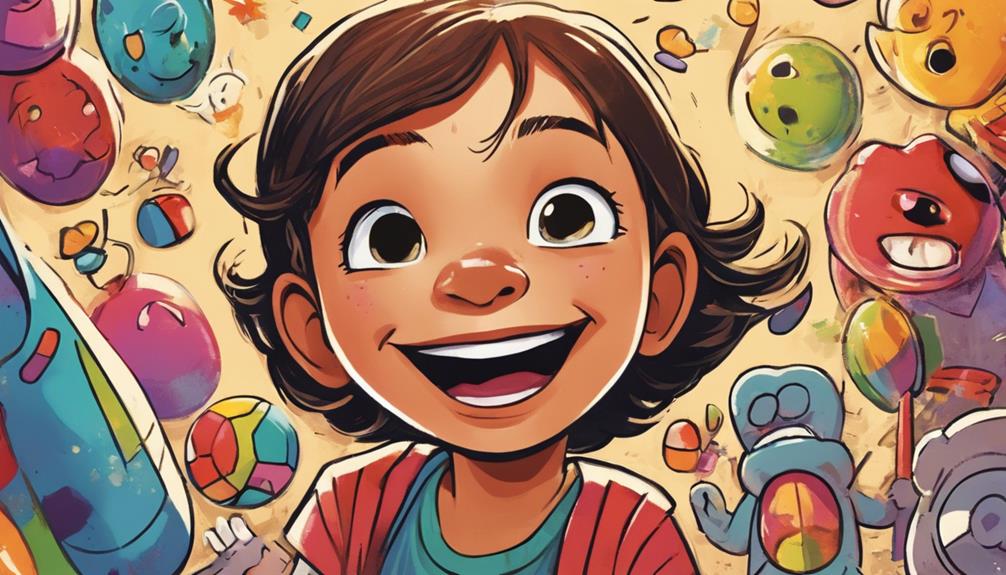
Baby teeth usually start to fall out around age 6, marking an important milestone in your child's dental development. This is the age when most children begin to lose their first tooth, often the lower central incisors. As your child progresses through this phase, they'll experience a natural timeline for losing baby teeth, with the upper central incisors following shortly after. As new permanent teeth start to push through the gums, it’s crucial to encourage good oral hygiene habits. Remind your child to brush their teeth twice a day and floss regularly to keep their mouth healthy. It’s also important to schedule regular dental check-ups to monitor the transition from baby teeth to permanent teeth. Remember, the most important thing is to offer support and reassurance when baby teeth fall out, as it can be a new and sometimes daunting experience for your child.
It's essential to note that while the average age for losing baby teeth is around 6, some children may lose their first tooth as early as 4 or as late as 7. This variability is completely normal and depends on your child's unique dental development.
The process of teeth starting to fall out signifies that permanent teeth are on their way.
Order of Tooth Loss
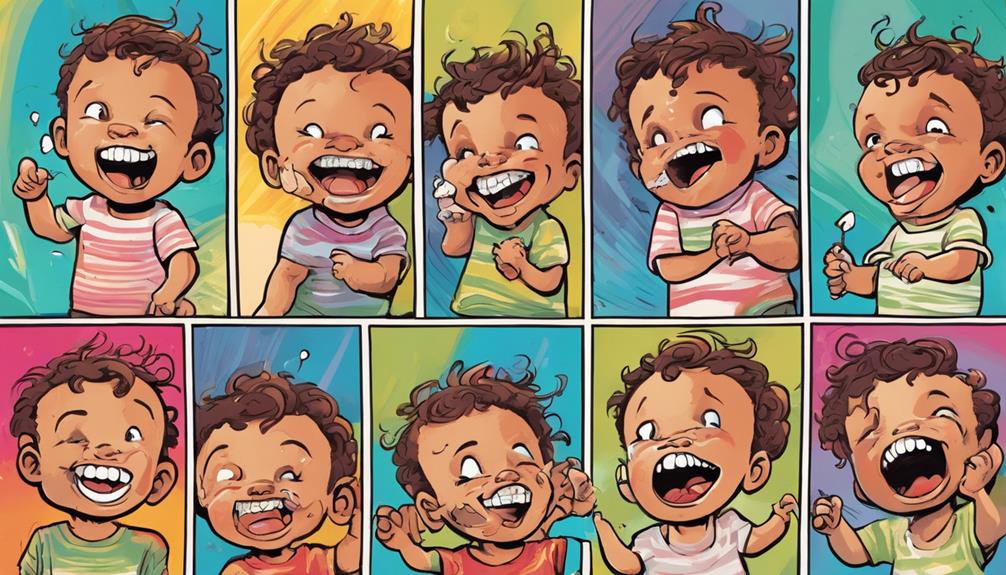
Understanding the order in which teeth fall out can help you anticipate your child's dental changes as they progress past the age of first tooth loss. Typically, the first baby teeth to go are the lower central incisors, around ages 6-7. Following these, the upper central incisors usually fall out between ages 6-8.
Next in the order of tooth loss are the lateral incisors, which are generally lost between ages 7-9. After that, your child will lose the canines and first molars, typically between ages 9-11. Finally, the second molars are usually lost between ages 10-12, completing the shift from baby teeth to permanent teeth.
| Tooth Type | Age Range |
|---|---|
| Lower Central Incisors | 6-7 |
| Upper Central Incisors | 6-8 |
| Lateral Incisors | 7-9 |
| Canines & First Molars | 9-11 |
| Second Molars | 10-12 |
Factors Influencing Tooth Loss
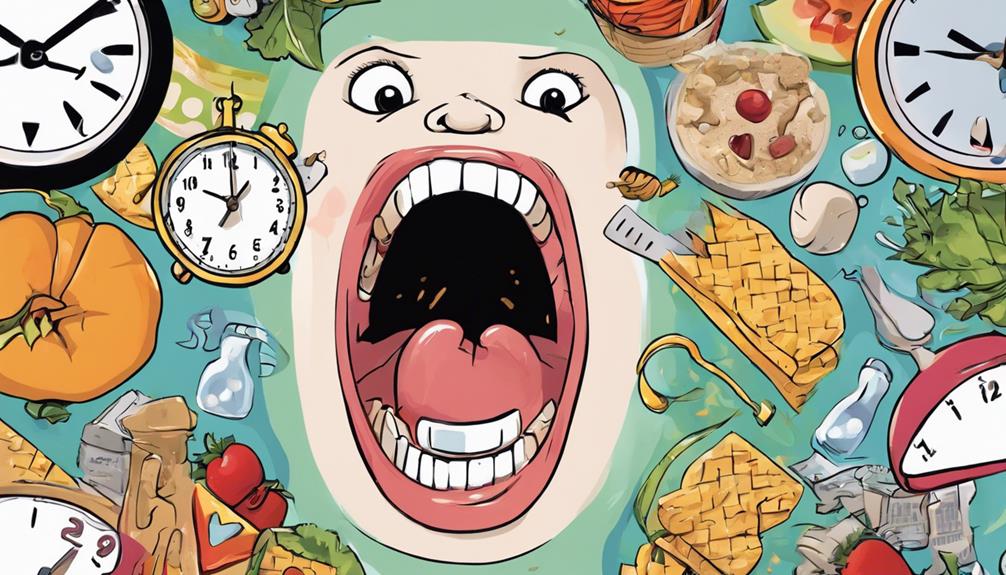
Several factors can influence when and how your child's teeth fall out, including the eruption of permanent teeth and any dental issues they may face. Typically, children start losing their baby teeth around age 6, as permanent teeth push them out. However, some kids may lose their baby teeth as early as 4 or as late as 7.
Early loss of baby teeth, due to tooth decay, trauma, or accidents, can lead to complications. If your child experiences early loss, it can cause neighboring teeth to drift into the empty space, resulting in crowding and misalignment when the permanent teeth finally erupt. This misalignment can affect your child's dental health and lead to further tooth loss down the line.
It's essential to monitor your child's dental health closely during this shift from baby teeth to permanent teeth. Ensuring they're practicing good oral hygiene can help prevent tooth decay and other issues that might contribute to early tooth loss. By staying proactive, you can support your child's dental health and promote a smoother shift to their adult smile.
Managing Loose Baby Teeth
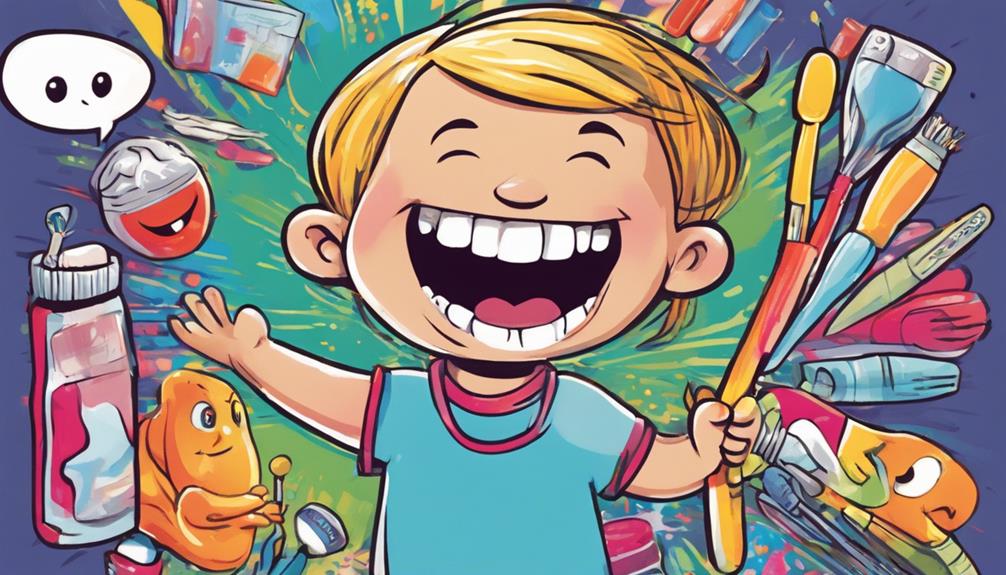
As your child starts losing their baby teeth, managing loose teeth becomes an important part of their dental care routine.
It's crucial to explain to your child that losing primary teeth is a natural process, which can help ease any fears they might have. Even with a loose tooth, encourage your child to continue brushing their teeth to maintain good oral hygiene and prevent decay.
Gently wiggling a loose tooth can help your child get used to the sensation, but pulling it should be avoided unless it causes pain. Most loose teeth will fall out on their own, so keep an eye out for any excessive bleeding or prolonged soreness after a tooth falls out.
Make sure to schedule regular dental visits with a pediatric dentist, who can monitor your child's dental health and provide guidance on managing loose teeth.
Importance of Dental Check-ups
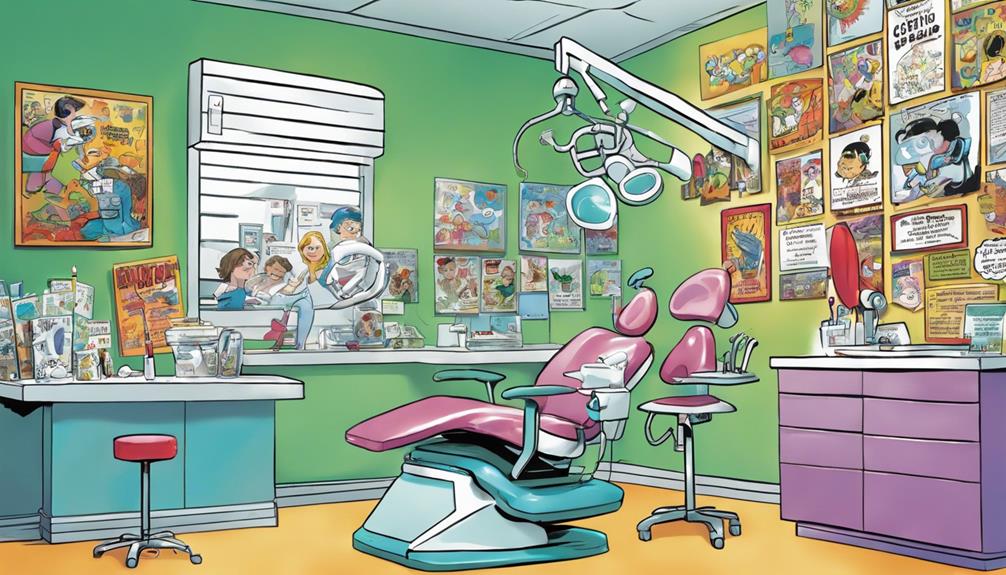
Regular dental check-ups play an essential role in guaranteeing your child's oral health during the change from baby teeth to permanent ones. Starting around age 6, these visits are vital for monitoring development and the loss of baby teeth. Pediatric dentists perform thorough examinations and may take X-rays to identify any potential issues with tooth alignment and eruption patterns.
Early intervention during these appointments helps prevent complications associated with premature or delayed tooth loss. By addressing any concerns promptly, you can guarantee that your child's change to permanent teeth occurs smoothly and without unnecessary issues. Regular dental check-ups, ideally every six months, support not just oral health but also your child's overall dental well-being.
Pediatric dentists provide valuable guidance on maintaining proper oral hygiene, especially during this significant period. They can help you navigate any challenges related to tooth loss and offer tips on care routines.
Frequently Asked Questions
Is It Normal for a 4 Year Old to Lose a Tooth?
It's unusual for a 4-year-old to lose a tooth. If it happens, you should consider possible causes like decay or injury. It's best to consult a dentist to guarantee everything's okay with your child's dental health.
When Do Teeth Fall Out Chart?
Ever wondered when teeth start their grand exit? You'll find a chart showing key ages: lower central incisors usually go first, followed by lateral incisors, canines, and molars, all making way for adult teeth.
What Is the Normal Age to Lose Baby Teeth?
You'll usually notice your child starts losing baby teeth around age 6. This process can vary, with some kids losing their first tooth as early as 4 or as late as 7.
Which Teeth Fall Out at Age 5?
At age 5, you'll likely notice your child's central incisors starting to wiggle. These front teeth usually fall out first, paving the way for those permanent teeth to come in nicely.
At What Age Do Children Typically Begin to Lose Their Baby Teeth?
Children typically begin losing their baby teeth around the age of 6 or 7. This process, known as “losing baby teeth signals development,” is a natural part of their growth and development. It’s important to encourage good oral hygiene habits to ensure the health of their adult teeth.
Conclusion
As your little one starts on this toothy adventure, remember that each lost baby tooth is a stepping stone toward a sparkling smile.
Embrace the wobbly moments and treasure the memories, for these tiny milestones mark their journey to adulthood.
Keep up with regular dental check-ups to guarantee their pearly whites shine bright.
So, let them wiggle and jingle those loose teeth—soon, they'll be exchanging them for treasures from the Tooth Fairy!
